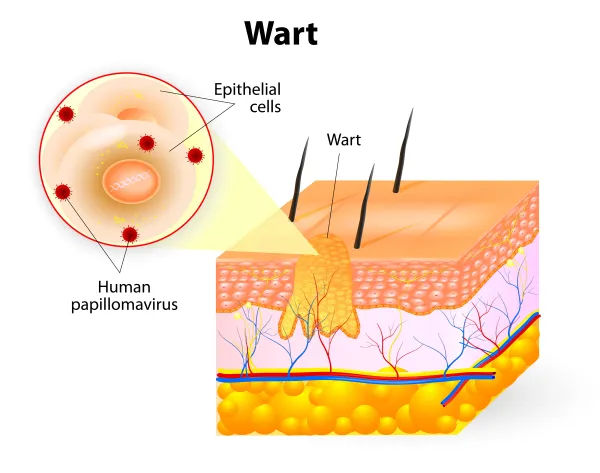Oncology & Hematology Coding Alert
Remove These 3 Myths for Super-Clean Skin Biopsy Claims
And use this clever coding trick when your provider performs multiple biopsies. Knowing how and when to code for skin biopsies when your provider performs them isn’t always as simple as it seems. That’s why several myths have sprung up about this very basic procedure. So, we’ve separated the skin biopsy facts from the fiction, and busted three of the most common myths for you. To help, we’ve also provided a handy tip for selecting the correct primary skin biopsy code when your provider performs multiple skin biopsies using different techniques. Myth 1: To Code a Skin Biopsy, Simply Choose the Appropriate Code From 11102-+11107 This first myth is partly true. Whenever your provider documents a skin biopsy, the first place you would logically turn to in CPT® is the biopsy codes: With these codes, you simply choose the one that most appropriately describes the technique your physician used to remove the tissue: either a tangential biopsy, which the provider accomplishes by shaving, slicing, or saucerizing the tissue sample from the surface of the skin; a punch biopsy, which the provider accomplishes with a 2-8 mm pen that goes deep into the subcutaneous skin layer and removes a full-thickness cylindrical sample of skin; or an incisional biopsy, which “involves removal of a larger, full-thickness sample of tissue from deep into the subcutaneous space and which typically involves the use of a scalpel and a more complex closure,” explains Sherika Charles, CDIP, CCS, CPC, CPMA, compliance analyst with UT Southwestern Medical Center in Dallas, Texas. However, CPT® also includes a long list of body-area specific biopsy codes that you will need to use if your provider performs biopsies of the skin for certain areas of a patient’s body. They include, but are not limited to: When beginning your search for the most specific code, always look in the CPT® Index to verify whether a more specific code is available before defaulting to the CPT® codes from the 111xx category. Myth 2: If a Physician Removes a Cancerous or Premalignant Lesion, You Can Report the Biopsy Separately A brief glance at the guidelines that precede the biopsy codes in CPT® easily refutes this myth. They state, “the obtaining of tissue for pathology during the course of these procedures [lesion excisions, destructions, or shave removals] is a routine component of such procedures … and is not separately reported.” However, this means “your provider’s intention must be clear when the procedure is performed,” advises Jan Rasmussen, PCS, CPC, ACS-GI, ACS-OB, owner/consultant of Professional Coding Solutions in Holcombe, Wisconsin. “If the intent is to remove the lesion and then send it for pathology, then an excision code should be reported rather than a biopsy code, even though the lesion was sent to pathology,” Rasmussen adds. Or, as CPT® puts it: “It is the responsibility of physician or qualified health care professional performing the procedure to clearly indicate the purpose of the procedure.” But note this exception: The guidelines also state that “biopsies performed on different lesions or different sites on the same date of service [DOS] may be reported separately, as they are not considered components of other procedures.” So, if your provider excises a lesion from one anatomic area, then performs a biopsy procedure or lesion removal on another, separate anatomic area on the same DOS, you can report both procedures separately. Myth 3: When Reporting Multiple Biopsies, You Use a Primary Biopsy Code for Each Different Technique This myth runs completely against CPT® guidelines. If followed, it will result in denials and a possible loss of revenue, so the myth needs to be dispelled, and you need to learn the correct way to code these tricky scenarios. Coding multiple biopsies of the same technique: CPT® tells you to use the primary code “along with the corresponding add-on code(s).” Per CPT®’s example, you would code three punch biopsies as 11104 x 1 and 11105 x 2. Coding multiple biopsies of different techniques: In these encounters, CPT® guidelines instruct you to “select the appropriate biopsy code (11102, 11104, 11106) plus an additional add-on code (+11103, +11105, +11107) for each additional biopsy performed.” Know This Trick to Select the Primary Skin Biopsy Code In the case of multiple biopsies, you’ll select the primary code for the first unit of the most extensive biopsy your provider performs. Fortunately, this is easy to figure out, as CPT® lists the integumentary biopsy codes in hierarchical order from the least (11102) to the most (11106) extensive procedure. Code this: Your provider performs two punch biopsies and three tangential biopsies on a patient. You would report 11104 x 1 for the first punch biopsy as it is the most extensive procedure, +11105 x 1 for the second punch biopsy, and +11103 x 3 for the three tangential biopsies.

Related Articles
Oncology & Hematology Coding Alert
- Condition Spotlight:
Tackle Complete Blood Cancer Coding With This Guide
And test yourself with these tricky scenarios. Despite some difficult clinical terminology and a somewhat [...] - Mythbusters:
Remove These 3 Myths for Super-Clean Skin Biopsy Claims
And use this clever coding trick when your provider performs multiple biopsies. Knowing how and [...] - Care Management:
Take These Tips, Transform Your TCM Documentation
But be careful: Your MDM calculations may soon change. When one of your patients transitions [...] - You Be the Coder:
Don’t Phone In These Codes for Patient Follow-Up
Question: I have a provider who is billing codes 99358 and +99359 for her supportive oncology [...] - Reader Questions:
Pause Before Adding E/Ms to Radiation Treatment Planning
Question: Can I bill office and outpatient evaluation and management (E/M) codes 99202-99205 and radiation oncology [...] - Reader Questions:
Know the Difference Between These Diagnostic Bone Marrow Procedures
Question: How is a bone marrow aspiration different from a bone marrow biopsy? Ohio Subscriber Answer: Bone [...] - Reader Questions:
Pick Lab Panels Only When All Tests Included
Question: Our physician ordered testing of a patient’s potassium, sodium, calcium, chloride, magnesium, and phosphate levels. [...]




